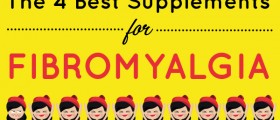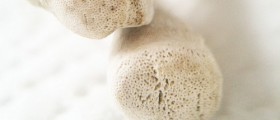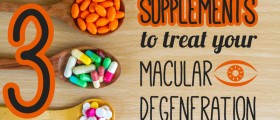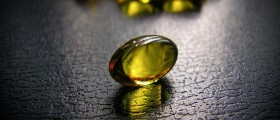Perimenopause
Perimenopause is the period in which a woman’s body starts the transition into menopause. It can last between two and eight years, plus one year after the final menstruation. Some women notice changes in their bodies as early as their thirties. Those changes are subtle indications that the body is getting ready for the end of the reproductive period.
Symptoms of Perimenopause
One of the first signs that menopause is on its way is menstrual irregularity. Periods may become less regular and blood flow gets lighter. It is not rare that a woman in menopause skips a period.
It is during this time that annoying hot flashes and sleep problems start, as well as mood changes, depression, and irritability.

Bladder problems, vaginal problems, changes in sexual arousal and desire, and bone loss may also start in this period.
Cosmetic changes also start, like dry hair and skin, as well as some weight gain.
This is also the time to start checking more regularly the cholesterol levels because some changes in LDL and HDL levels are to be expected.
Supplements for Perimenopause
There are many supplements that can help a woman go through this period with fewer problems.
Women who are entering perimenopause should consider taking a quality multivitamin and multimineral. The most important vitamins are A, C, E, B complex vitamins, and vitamin D.
It is recommended to take additional vitamin D along with multivitamins because in perimenopause the need for this vitamin increases because it promotes the absorption of calcium, important for bone health.
Omega-3 essential fatty acid is also very important. It is recommended to take 100 mg every day. Omega-3 protects the brain, heart, and eyes.
Several herbal remedies and formulations can be very beneficial in perimenopause. One of them is Dong quai, a herb that contains vitamins B12, A, and E and also phytoestrogens, which mimic the estrogen action in the body and thus prevent symptoms of perimenopause.
Dong quai can be taken as a tea, dipped in hot water, or as a supplement.
Maca root is a plant from South America that helps balance hormonal levels in the body. Like Dong Quai, it can be prepared as a tea or taken in the form of herbal supplements.
Black cohosh is a North American plant that, just like Dong Quai, contains phytoestrogens. This makes it an excellent remedy for problems with anxiety, depression, and hot flashes and promotes lubrication during intercourse.
Soy reduces hot flashes and night sweating, improves heart function, prevents bone loss, and regulates insulin levels. Soy can be added very simply to the daily diet, given that today soy products are widely available in any supermarket.
- Vasomotor symptoms (VMS) such as hot flushes and sweating, are very common in menopausal populations and can cause physical and mental discomfort. Estrogen remains the most effective therapy for hot flashes and is approved by the U.S. Food and Drug Administration (FDA). Although some women may prefer lifestyle modification, there is no evidence that lowering the room temperature, exercising, or avoiding triggers such as alcohol and spicy foods can improve hot flashes.
- An alternative to traditional HRT is tibolone (Livial®, 2.5 mg tablet), a new regimen consisting of a synthetic steroid hormone broken down by the body’s metabolism into three compounds that act similarly to naturally-produced estrogen, progesterone, and testosterone.
- Selective Estrogen Receptor Modulators (SERMs), such as Raloxifene (Evista®), can be used for both the prevention and treatment of osteoporosis in postmenopausal women. SERMs are non-steroidal compounds with tissue-specific actions, which induce a different response in the ER from estradiol and enhance osteoclast apoptosis.
- In recent years, nutraceuticals such as phytoestrogens and herbal derivatives have gained popularity due to their claimed ability to relieve menopausal symptoms. Nutraceuticals are defined as foods, parts of foods, or botanicals that provide medical and health benefits, such as the prevention and treatment of disease. Herbal remedies are frequently used to alleviate menopausal symptoms and may be effective for treating acute menopausal syndrome through different mechanisms. Among them, Actaea racemosa can be used for the treatment of menopause symptoms such as hot flash, insomnia, irritability, but also musculoskeletal pain; Ginkgo biloba is effective on attention disorders in postmenopausal women; Panax ginseng alleviates sleep disorders, depression, and improves sexual function; Valerian officinal is useful for hot flashes, anxiety, sleep disorders, and dysmenorrhea. Not similar to phytoestrogens, herbal derivatives including Actea racemosa, Ginkgo biloba, and Valerian officinal are acting through estrogen-independent pathways to alleviate menopausal symptoms.
- One of the major problems with herbal therapies is that people usually take supplement pills that are not prepared by trained herbalists. As herbal supplements are not strictly regulated like prescription drugs, the quality and safety may vary between brands or even between bundles of the same brand. These compounds may also interact with prescription drugs, resulting in dangerous adverse events.
- Isoflavones, compounds abundant in soybeans, are thought to be responsible for exerting estrogen-like effects, thereby relieving menopausal symptoms. There are two types of estrogen receptors: ER?, the predominant form in the breast and uterus, and ER?, the predominant form in the cardiovascular system, urogenital tract, and bone. Isoflavones bind weakly to ER?; the affinity of isofolavones to ER? is higher. The estimated estrogenic effects of different isoflavones using human cell cultures in vitro have shown that the relative potencies are estradiol 100, genistein 0.084, equol 0.061, and daidzein 0.013, respectively. However, isoflavones can circulate at 10,000 times the concentration of estradiol and achieve greater binding potential through abundance. For example, in estrogen-deficient female aromatase knockout mice, isoflavones act as estrogens and improve ovarian morphology.
- www.betterhealth.vic.gov.au/health/conditionsandtreatments/menopause-and-complementary-therapies
- www.nhs.uk/conditions/menopause/treatment/
- Photo courtesy of Fritzflohrreynolds by Wikimedia Commons: commons.wikimedia.org/wiki/File:Actaea_racemosa_-_Black_Cohosh.jpg

















Your thoughts on this
Loading...